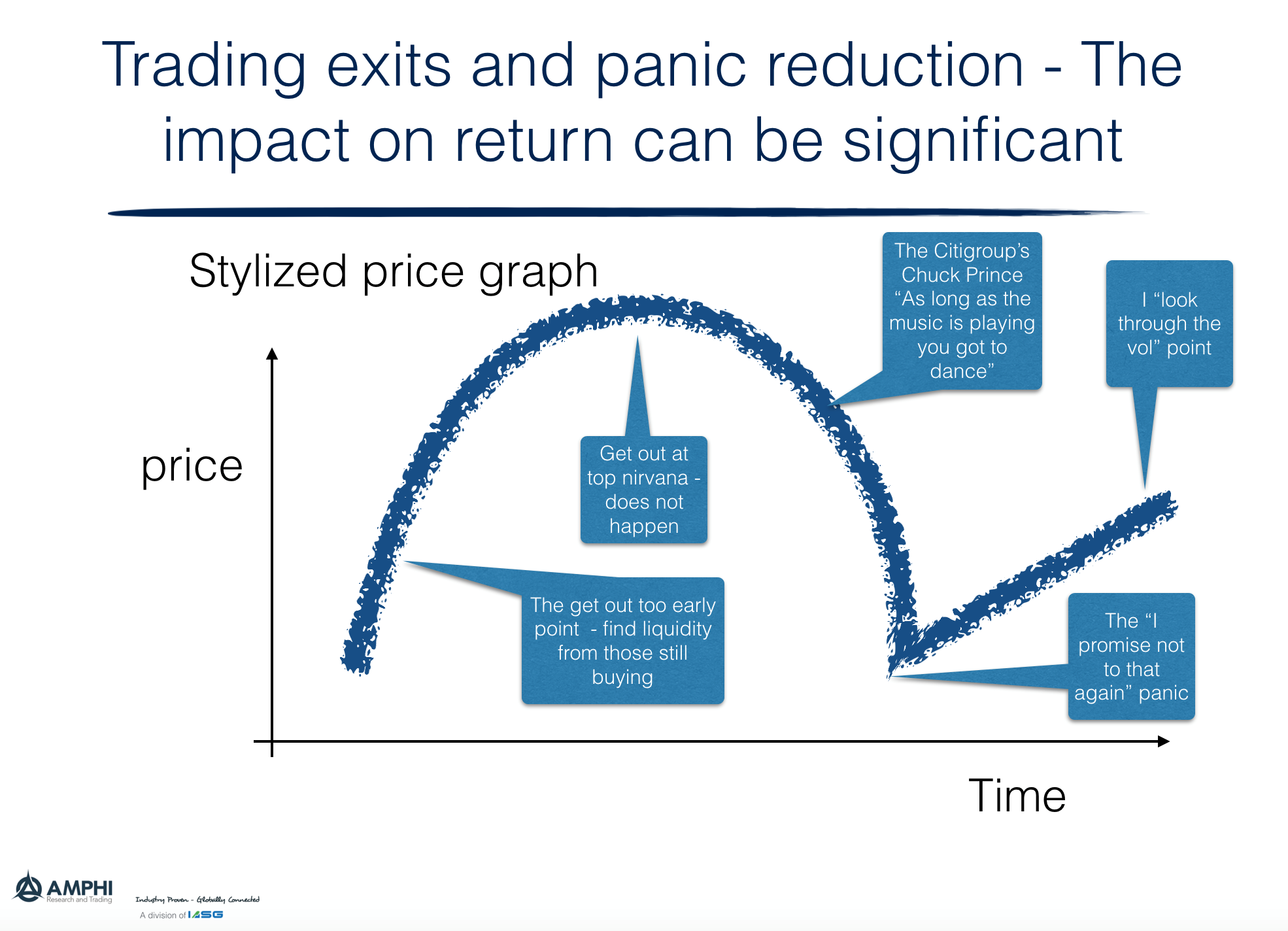“If you’re first out the door, that’s not called a panic” – Margin Call (The Movie)
A panic only occurs if you are a late follower toward the exit. The panic occurs when you realize that the cost of exiting is higher than expected and liquidation is not moving as fast as expected. A trader can go through a mini-panic on a regular basis if an exit strategy is not planned correctly and there is a liquidity shortfall, Exit strategies are all about not panicking at those critical times, yet there are trade-offs between reducing panic and maximizing return. The control of exits as well as entries is a core issue with model building and drives incremental returns.
As firms get bigger the cost of entry and exit becomes higher and becomes a key source of differentiation across firms. For exits, leaving money on the table by leaving early may be more important than extracting the last value with the risk of a liquidity event.
Liquidity or panic really occurs when there is an endogenous risk event, a trading event based on market behavior and not outside shocks. If there is a trading reaction from down trend, a triggering of orders based on price behavior the potential for less liquidity and panic increase. Hence, there is a need for larger firms to look for exits prior to tops in order to lessen liquidity risk. Smaller firms could wait longer but they may suffer from the liquidity-taking of larger firms. A game theoretic approach is necessary when looking at trading exit risk. This is more than just stop placement and some liquidity measure. The use of dispersion in orders through algos must be looked at conditionally versus liquidity situation.
The critical question of exit strategies has certainly been elevated in importance for most managers was well as investors. No liquidity and there is the potential for financial panics on the micro level. If even firms have the same problem, there is potential for a major panic.


